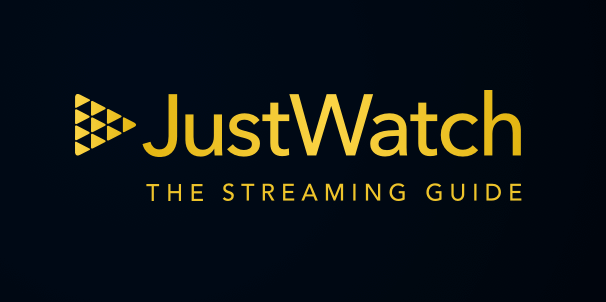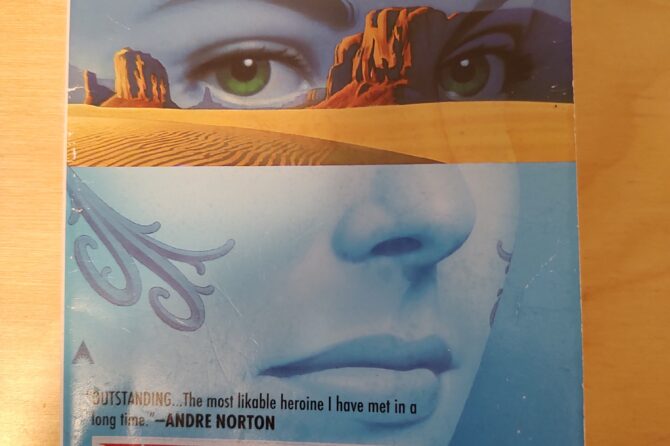 Jurassic Park opened in the UK 20 years ago this month. A 3D conversion was foisted upon an indifferent a few months ago. Universal is making Jurassic Park IV. All of which got me thinking about the original film and all its many failings compared to Michael Crichton’s novel. Not least being its candidacy for the worst ending ever to disgrace a major science fiction film. The novel has a perfectly fine ending. So 20th birthday or not, this retrospective isn’t a celebration of Jurassic Park, but rather a look at what went wrong.
Jurassic Park opened in the UK 20 years ago this month. A 3D conversion was foisted upon an indifferent a few months ago. Universal is making Jurassic Park IV. All of which got me thinking about the original film and all its many failings compared to Michael Crichton’s novel. Not least being its candidacy for the worst ending ever to disgrace a major science fiction film. The novel has a perfectly fine ending. So 20th birthday or not, this retrospective isn’t a celebration of Jurassic Park, but rather a look at what went wrong.
As so often the case, it’s largely in the writing. The performances and technical aspects are fine for what they are (more on the cinematographic approach below). Ironic then that Crichton spoilt his own story in collaboration with fellow screenwriter David Koepp. The rest of it is down to the attitude of Steven Spielberg, taking material which should have been treated like Aliens, neutering it for the family market, then completely forgetting, because he sure knew when he made Jaws, that a great monster movie must end with an all guns blazing life and death apocalypse.
In the early ‘90s I’d read and enjoyed Michael Crichton’s novel Jurassic Park, staying up until the early hours to finish it, breathless with excitement. When it was announced Spielberg was to make the film version I was hopeful. It seemed that after a string of films like Empire of the Sun, Always and Hook Spielberg was about to reclaim his action crown from that upstart, James Cameron. Who, in the intervening period since the release of Spielberg’s finest action work, had become the new king of blockbusters. He had Aliens, The Abyss and two Terminator films to prove it. Now Spielberg was fighting back. Surely the director of Jaws could recover his bite?
The first warning that all was not well was the PG certificate. Certainly Jaws had escaped with an A, the 1970’s equivalent of a PG. But anyone who had read Crichton’s novel knew a PG was out of the question if things were going to be done right.
About four days before it opened to the public I settled down in a virtually empty auditorium to watch Jurassic Park. The first disappointment was that the screen did not open out from the regular 1.85-1.
What!
Sugarland Express, Jaws, Close Encounters of the Third Kind, 1941, Hook, all the Indiana Jones films, had been 2.35-1. Certainly, Spielberg’s ‘smaller’, more personal films, such as ET, The Color Purple, Empire of the Sun and Always were 1.85-1, but he always shot his genre adventures in Panavision. What was going on? Had the projectionist made a mistake? No, it seemed to me another piece of evidence of the decline of Spielberg as a ‘cinematic’ filmmaker, an artistic compromise with television.

Why spend all that money digital effects to fill a 2.35-1 frame when it is going to be panned and scanned for VHS by Christmas? My answer always is, if you’re not going to make your film to fill the cinema screen why would you expect me to go to the cinema to see it? 1.85-1 is a compromise for home consumption. One you’ll rarely find me buying. It’s a personal obsession. A matter of esthetic and commercial principle.
Perhaps a note of personal explanation is in order. I always score 100% on vision field tests. I suppose I have a very wide field of view. Ever since I was a boy if I went to the cinema and the screen didn’t expand all the way as the main feature began I felt let down. Perhaps it was because the exciting Japanese monster movies they sometimes showed at Saturday morning matinees were always in TohoScope, while the Children’s Film Foundation films we got on bad weeks were always 1.85-1, or even 4:3. It all goes back to monster movies. They are supposed to be wide. But that aside, 2.35-1 seems designed to naturally reflect the way we see the world, with much more width than height. When I watch a 1.85-1 film at the cinema it always looks like the sides of the image are missing. As if there should be more picture. Since 1953 big Hollywood cinema means 2.35-1 (CinemaScope / Panavision) or 2.2-1 (70mm). Part of me still thinks that anything less is a glorified TV movie.
Digression over. Jurassic Park was thrilling, suspenseful, exciting. But there were problems. The crowd-pleasing lawyer-on-the-toilet gag – he would be a banker now – was just a cheap cartoon laugh, entirely at odds with the general tone. Why are we supposed to care and empathise with the main characters in their peril, but guffaw when a man is killed at his most vulnerable. It’s a nasty moment of bigotry not in the novel, a comedic jolt which suggests we are not to take the film seriously. Spielberg was, as people might say now, having a laugh.
A far bigger problem was the sacrifice of the entire point of Crichton’s book, which was that the escalating disaster served as a demonstration of chaos theory. The film settles for the more conventional dire-warning- against- the- unforeseen- consequences- of- technology-run-amok. Which is not only less original and interesting, but put Jurassic Park firmly in Cameron’s court, where it singularly failed to measure up because Spielberg didn’t have the edge to deliver Cameron, or indeed Crichton, levels of intensity and carnage. 
Jurassic Park felt like Cameron/Crichton-lite, specifically it felt like Aliens-lite, the film which is its most obvious template. The Terminator films and Aliens all had R ratings in the US and 18 certificates in the UK, meaning no one under 18 was allowed in. Entertaining as Jurassic Park was, it lacked the unrestrained terror and horror of the material Spielberg was competing with to ever rival it in excitement. What should have been Aliens with dinosaurs was just a walk in the park. (In the years since the whole of Hollywood has turned over to making watered down family friendly fare. Cameron, with Titanic and Avatar, no exception.)
Even so, it might have worked, except that despite being another monster movie in another vacation location, the script lacked the characterisation and thematic depth of Jaws. There was nothing to rival the powerhouse acting trio of Roy Scheider, Robert Shaw, Richard Dreyfuss. The cinematography was nowhere near Jaws standard. And even though John Williams provided a link by writing the music for both films, his work on Jurassic Park, great by anyone else’s measure though it was, never matched the iconic Jaws.
How, with another 18 years of filmmaking experience, could Steven Spielberg make a monster film worse than his all time 1975 classic? It made no sense. But then as we now know, Spielberg has become a much less interesting filmmaker as the decades have gone by.
So back in the cinema. Jurassic Park was, for all its disappointment, still engaging. Because even second-rate Spielberg is, for the time its on screen and before we stop to examine all the many flaws, better than most filmmakers’ finest work. He is better at piecing together action moment by moment than he is at telling stories. And then the credits were rolling. I almost literally could not believe what I was seeing, and what hadn’t just seen.
What I hadn’t just seen was anything resembling an ending. There wasn’t one.
Jurassic Park doesn’t end. It stops. The main characters get in a helicopter fly away. Roll end titles. Unlike the novel, there is no final dinosaur apocalypse. And when has there ever been a satisfying monster movie without a last battle?
The problem appears to have been that Spielberg saw the story as an environmental fable with the dinosaurs not monsters at all, but as victims and endangered creatures. Which is true as far as it goes, but shows a literalist failure to understand the material. Jurassic Park was not a documentary, any more than was Jaws. The shark in Jaws didn’t behave like a real great white because it wasn’t one. Jaws knew the shark’s place as an archetypical creature in a monster movie. And monsters in monster movies have to be defeated. Running away will only get you as far as the end of the second act, or maybe to the surprise coda in the escape pod. Sooner or later you have to stand and fight.
Spielberg revealed himself as a man changed from the days of Jaws, one now too sensitive to deliver unbridled monster mayhem. He just couldn’t bring himself to go to the places the novel went. A place which involved an emergency cache of firepower, tremendous excitement and a pile of dead monsters. Spielberg failed to understand what Cameron completely got. The xenomorphs weren’t endangered creatures to be escaped from. They were the dread other. Nightmares in the dark. Terrifying creatures of the id.
The finest monster movies are redemptive allegories of our struggle with our most deep rooted fears. Without the fight there is no victory, and without victory, however compromised, there is no catharsis. Monster movies demand a final apocalypse. Spielberg failed to deliver because he didn’t understand the psychological, mythological, even theological underpinnings of his own movie. (He overcompensated by tacking onto the sequel the most ludicrous, inappropriately extended ending imaginable).
The audience was cheated, even if, based on box office, most ticket buyers didn’t realise it. But imagine if Star Wars had stopped after Luke, Han and Leia escaped from the Death Star, the Millennium Falcon flying away like that helicopter. Cue John Williams.
Had Cameron had made Jurassic Park there would have been an apocalypse. He would probably have nuked Isla Nublar from orbit. With extreme prejudice.











Recent Comments